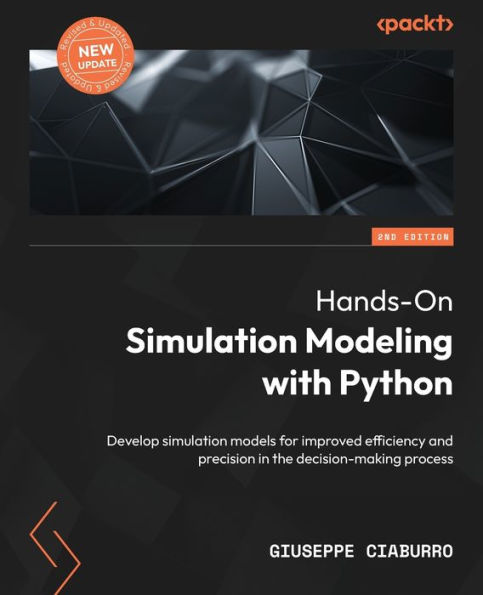Learn to construct state-of-the-art simulation models with Python and enhance your simulation modelling skills, as well as create and analyze digital prototypes of physical models with ease
Key Features:
- Understand various statistical and physical simulations to improve systems using Python
- Learn to create the numerical prototype of a real model using hands-on examples
- Evaluate performance and output results based on how the prototype would work in the real world
Book Description:
Simulation modelling is an exploration method that aims to imitate physical systems in a virtual environment and retrieve useful statistical inferences from it. The ability to analyze the model as it runs sets simulation modelling apart from other methods used in conventional analyses. This book is your comprehensive and hands-on guide to understanding various computational statistical simulations using Python.
The book begins by helping you get familiarized with the fundamental concepts of simulation modelling, that'll enable you to understand the various methods and techniques needed to explore complex topics. Data scientists working with simulation models will be able to put their knowledge to work with this practical guide. As you advance, you'll dive deep into numerical simulation algorithms, including an overview of relevant applications, with the help of real-world use cases and practical examples. You'll also find out how to use Python to develop simulation models and how to use several Python packages. Finally, you'll get to grips with various numerical simulation algorithms and concepts, such as Markov Decision Processes, Monte Carlo methods, and bootstrapping techniques.
By the end of this book, you'll have learned how to construct and deploy simulation models of your own to overcome real-world challenges.
What You Will Learn:
- Get to grips with the concept of randomness and the data generation process
- Delve into resampling methods
- Discover how to work with Monte Carlo simulations
- Utilize simulations to improve or optimize systems
- Find out how to run efficient simulations to analyze real-world systems
- Understand how to simulate random walks using Markov chains
Who this book is for:
This book is for data scientists, simulation engineers, and anyone who is already familiar with the basic computational methods and wants to implement various simulation techniques such as Monte-Carlo methods and statistical simulation using Python.



